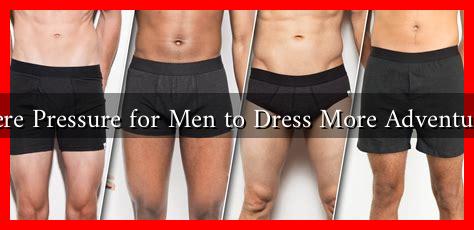-
Table of Contents
Is There Pressure for Men to Dress More Adventurously?
In recent years, the fashion landscape has undergone a significant transformation, particularly regarding men’s clothing. Traditionally, men’s fashion has been characterized by a more conservative and utilitarian approach. However, as societal norms evolve, there is a growing pressure for men to embrace more adventurous styles. This article explores the factors contributing to this shift, the implications for men’s fashion, and how men can navigate this changing landscape.
The Changing Landscape of Men’s Fashion
Historically, men’s fashion has been dominated by a limited palette of colors and styles. However, the rise of social media and the influence of celebrity culture have played pivotal roles in reshaping these norms. Today, men are increasingly encouraged to express their individuality through their clothing choices. This shift can be attributed to several factors:
- Influence of Social Media: Platforms like Instagram and TikTok have democratized fashion, allowing men to showcase their unique styles and gain inspiration from others.
- Celebrity Endorsements: High-profile figures such as Harry Styles and Timothée Chalamet have popularized bold fashion choices, encouraging fans to experiment with their looks.
- Gender Fluidity: The growing acceptance of gender fluidity has led to a blurring of traditional gender lines in fashion, allowing men to explore styles previously deemed feminine.
The Pressure to Stand Out
As the fashion landscape evolves, many men feel an increasing pressure to stand out in a crowd. This pressure can manifest in various ways:
- Workplace Expectations: Many modern workplaces are adopting more relaxed dress codes, prompting men to dress more creatively.
- Social Events: From weddings to parties, men are often expected to dress in ways that reflect their personality, leading to a desire for more adventurous choices.
- Peer Influence: Friends and social circles can significantly impact fashion choices, with many men feeling compelled to keep up with their peers’ styles.
Case Studies: Brands Leading the Charge
Several brands have recognized this shift and are actively promoting adventurous styles for men. For instance:
- Gucci: Under the creative direction of Alessandro Michele, Gucci has embraced bold patterns, vibrant colors, and gender-fluid designs, encouraging men to break free from traditional fashion constraints.
- ASOS: The online retailer has launched campaigns featuring diverse male models in eclectic outfits, showcasing the idea that fashion is for everyone, regardless of gender norms.
- Fear of God: Jerry Lorenzo’s brand has gained popularity for its unique blend of streetwear and high fashion, appealing to men looking to make a statement with their clothing.
Statistics on Men’s Fashion Trends
To further illustrate the changing dynamics of men’s fashion, consider the following statistics:
- A survey by Statista found that the global men’s fashion market is projected to reach $660 billion by 2025, indicating a growing interest in diverse styles.
- According to a report by Business of Fashion, 60% of men aged 18-34 expressed a desire to experiment with their fashion choices.
Navigating the Pressure: Tips for Men
For men feeling the pressure to dress more adventurously, here are some tips to navigate this evolving landscape:
- Start Small: Incorporate bold accessories or statement pieces into your wardrobe before fully committing to adventurous styles.
- Find Inspiration: Follow fashion influencers and brands on social media to discover new styles that resonate with you.
- Be Confident: Confidence is key when trying new styles. Embrace your choices and wear them with pride.
Conclusion
The pressure for men to dress more adventurously is a reflection of broader societal changes in attitudes toward gender and self-expression. As traditional norms continue to evolve, men are increasingly encouraged to explore their individuality through fashion. By embracing this shift, men can not only enhance their personal style but also contribute to a more inclusive and diverse fashion landscape. Ultimately, the key takeaway is that fashion should be a form of self-expression, and there is no right or wrong way to dress—only what feels authentic to you.


